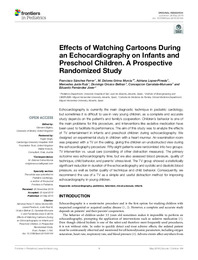Por favor, use este identificador para citar o enlazar este ítem:
https://hdl.handle.net/11000/33100Registro completo de metadatos
| Campo DC | Valor | Lengua/Idioma |
|---|---|---|
| dc.contributor.author | Sánchez Ferrer, Francisco | - |
| dc.contributor.author | Grima Murcia, Mª Dolores | - |
| dc.contributor.author | Lopez-Pineda, Adriana | - |
| dc.contributor.author | Juste Ruiz, Mercedes | - |
| dc.contributor.author | Orozco-Beltran, Domingo | - |
| dc.contributor.author | Carratala-Munuera, Concepcion | - |
| dc.contributor.author | Fernández Jover, Eduardo | - |
| dc.contributor.other | Departamentos de la UMH::Farmacología, Pediatría y Química Orgánica | es_ES |
| dc.contributor.other | Departamentos de la UMH::Medicina Clínica | es_ES |
| dc.contributor.other | Departamentos de la UMH::Histología y Anatomía | es_ES |
| dc.date.accessioned | 2024-09-13T10:59:05Z | - |
| dc.date.available | 2024-09-13T10:59:05Z | - |
| dc.date.created | 2019-05-24 | - |
| dc.identifier.citation | Front Pediatr. 2019 May 24:7:184 | es_ES |
| dc.identifier.issn | 2296-2360 | - |
| dc.identifier.uri | https://hdl.handle.net/11000/33100 | - |
| dc.description.abstract | Echocardiography is currently the main diagnostic technique in pediatric cardiology, but sometimes it is difficult to use in very young children, as a complete and accurate study depends on the patient’s and family’s cooperation. Children’s behavior is one of the main problems for this procedure, and interventions like sedative medication have been used to facilitate its performance. The aim of this study was to analyze the effects of TV entertainment in infants and preschool children during echocardiography. We designed an experimental study in children with a heart murmur. An examination room was prepared with a TV on the ceiling, giving the children an unobstructed view during the echocardiography procedure. Fifty-eight patients were randomized into two groups: TV intervention vs. usual care (consisting of other distraction measures). The primary outcome was echocardiography time, but we also assessed blood pressure, quality of technique, child behavior, and parents’ stress level. The TV group showed a statistically significant reduction in duration of the echocardiography and systolic and diastolic blood pressure, as well as better quality of technique and child behavior. Consequently, we recommend the use of a TV as a simple and useful distraction method for improving echocardiography in young children. | es_ES |
| dc.format | application/pdf | es_ES |
| dc.format.extent | 6 | es_ES |
| dc.language.iso | eng | es_ES |
| dc.publisher | Frontiers Media S.A. | es_ES |
| dc.rights | info:eu-repo/semantics/openAccess | es_ES |
| dc.rights | Attribution-NonCommercial-NoDerivatives 4.0 Internacional | * |
| dc.rights.uri | http://creativecommons.org/licenses/by-nc-nd/4.0/ | * |
| dc.subject | echocardiography | es_ES |
| dc.subject | pediatrics | es_ES |
| dc.subject | television | es_ES |
| dc.subject | blood pressure | es_ES |
| dc.subject | infants | es_ES |
| dc.subject.other | CDU::6 - Ciencias aplicadas::61 - Medicina::616 - Patología. Medicina clínica. Oncología::616.1 - Patología del sistema circulatorio, de los vasos sanguíneos. Transtornos cardiovasculares | es_ES |
| dc.title | Effects of Watching Cartoons During an Echocardiography on Infants and Preschool Children. A Prospective Randomized Study | es_ES |
| dc.type | info:eu-repo/semantics/article | es_ES |
| dc.contributor.institute | Institutos de la UMH::Instituto de Bioingeniería | es_ES |
| dc.relation.publisherversion | https://doi.org/10.3389/fped.2019.00184 | es_ES |

Ver/Abrir:
Effects of Watching Cartoons During an Echocardiography on Infants and Preschool Children. A Prospective Randomized Study.pdf
920,95 kB
Adobe PDF
Compartir:
 La licencia se describe como: Atribución-NonComercial-NoDerivada 4.0 Internacional.
La licencia se describe como: Atribución-NonComercial-NoDerivada 4.0 Internacional.
.png)